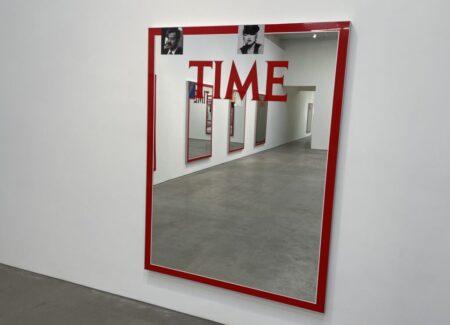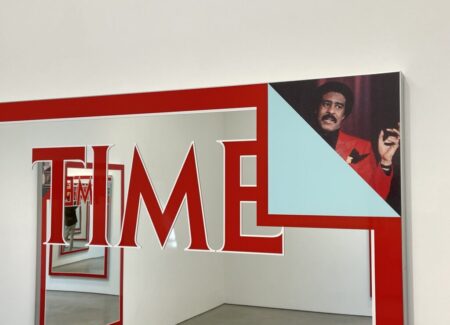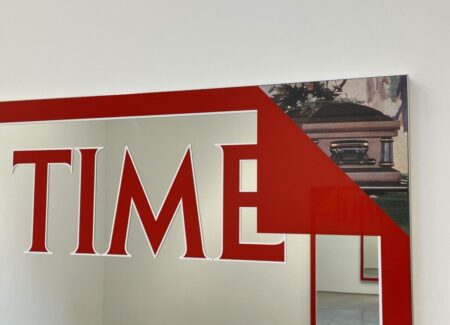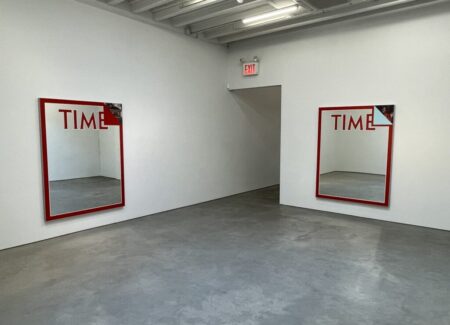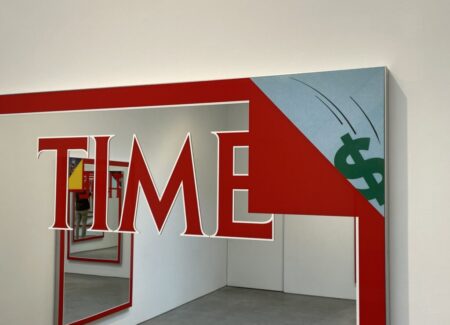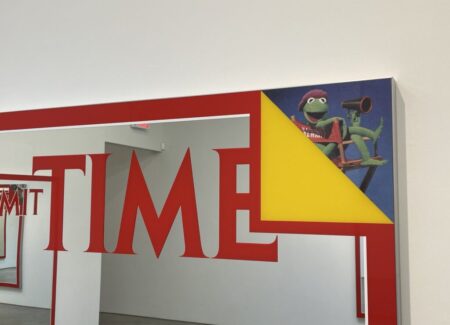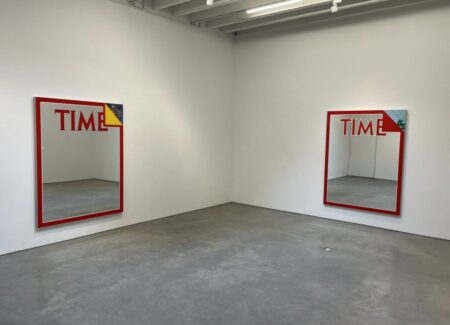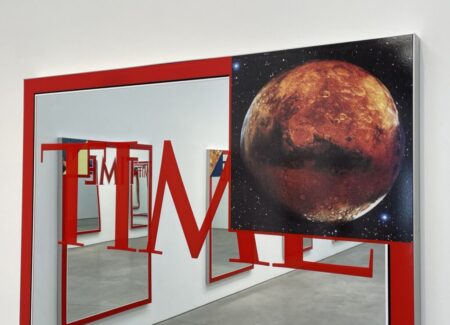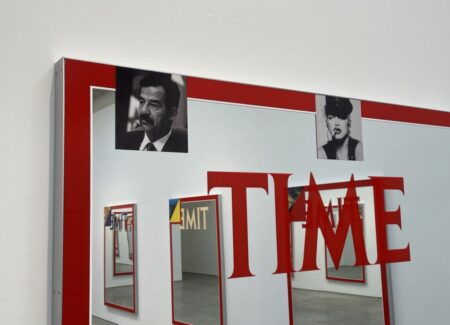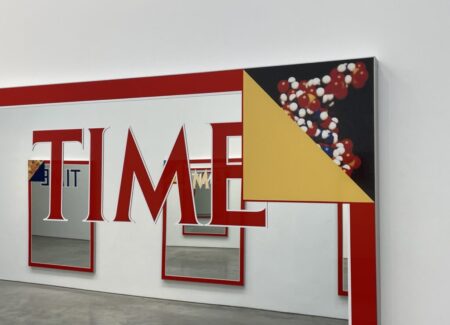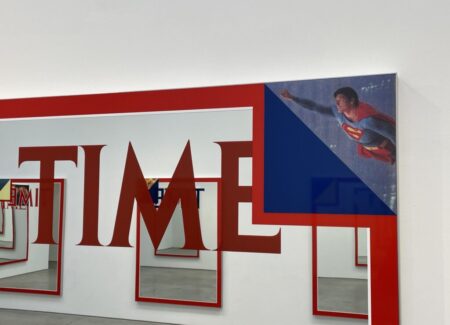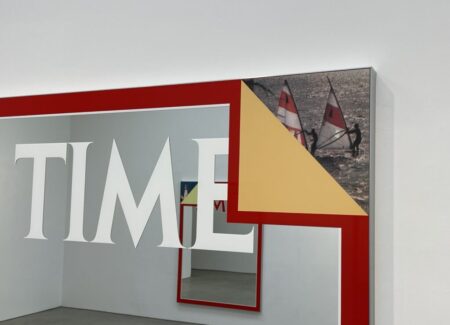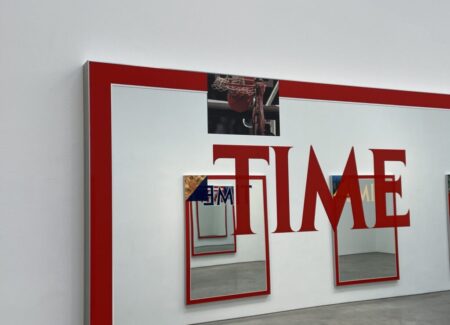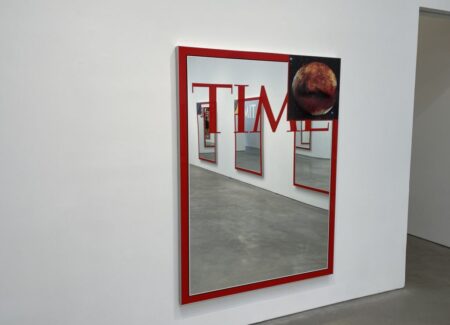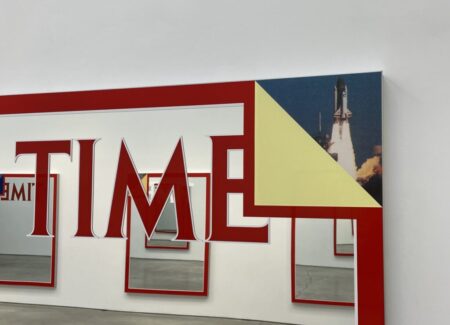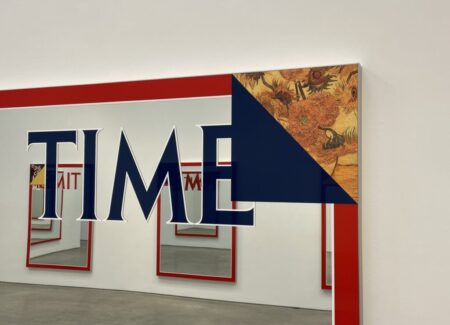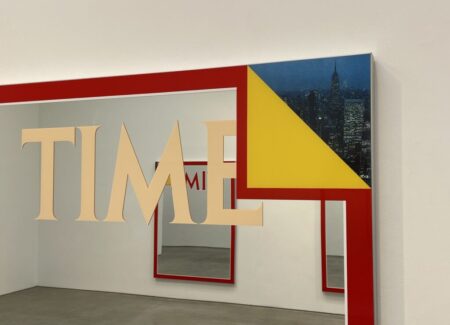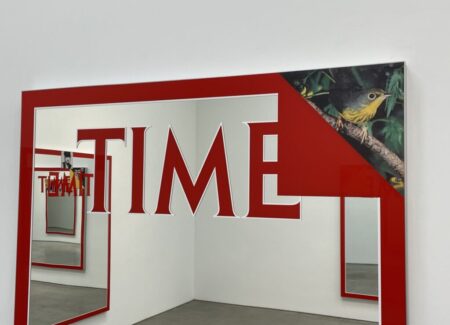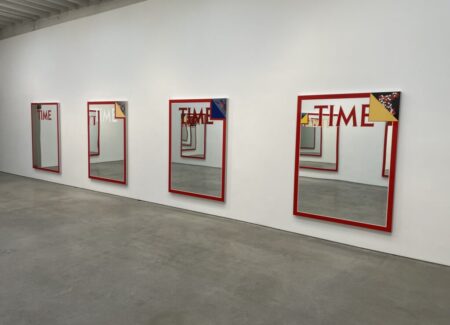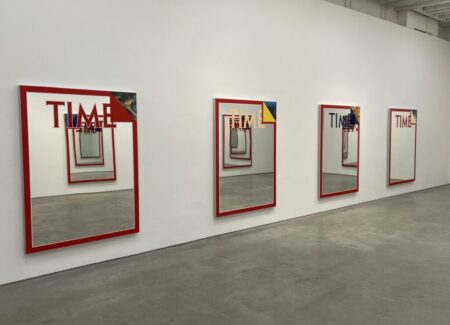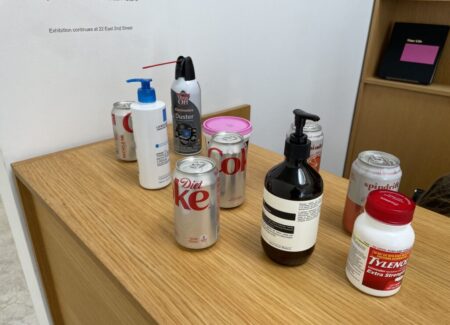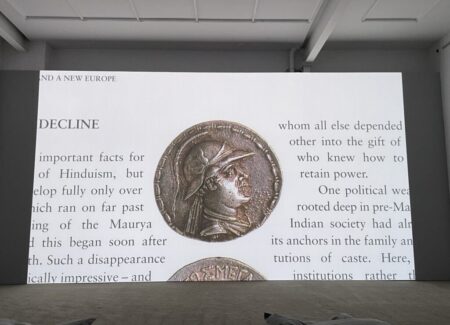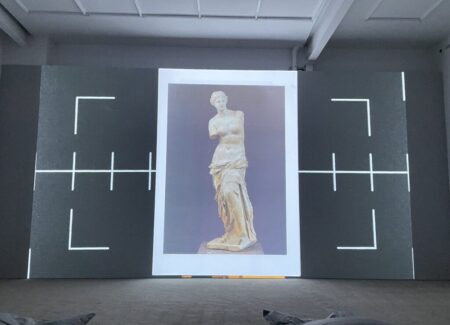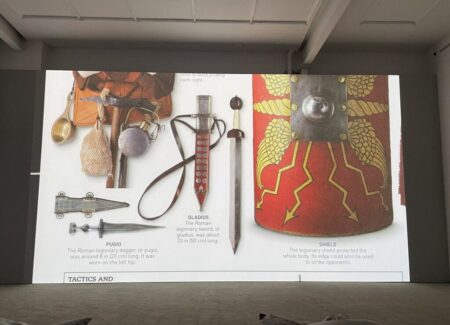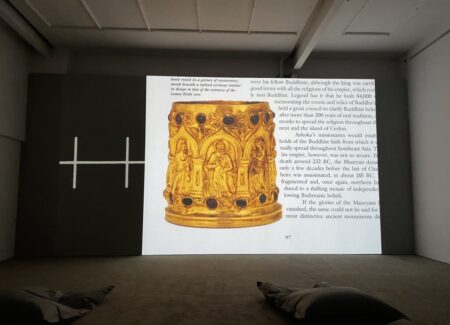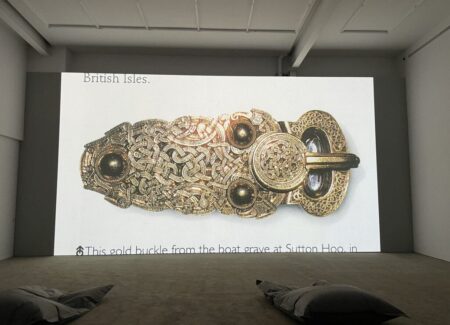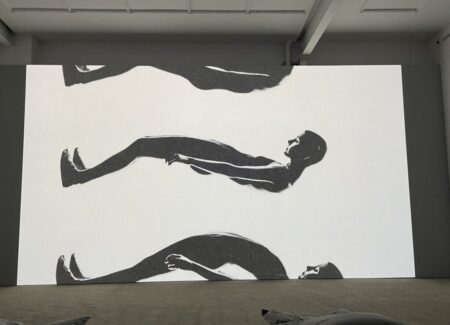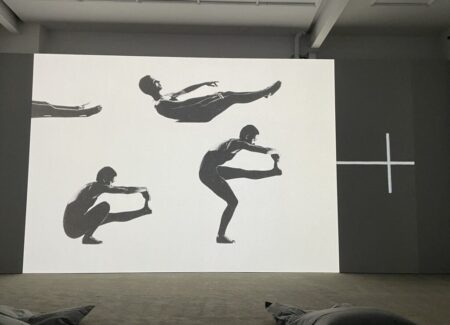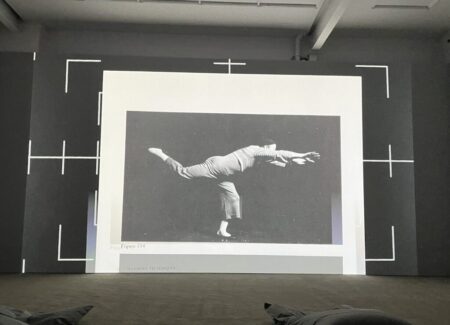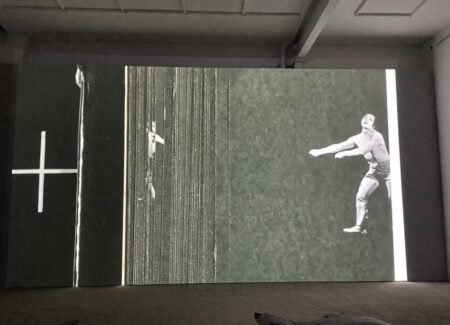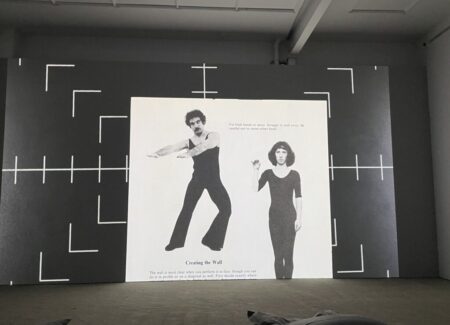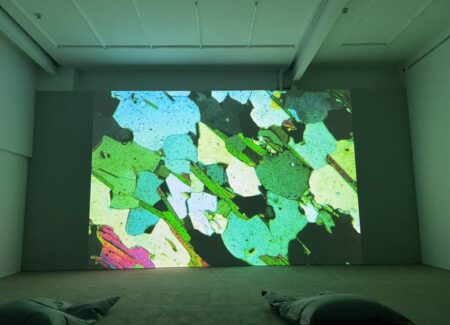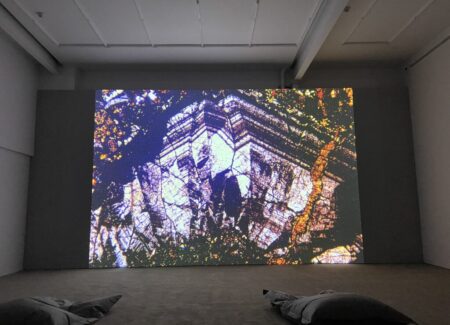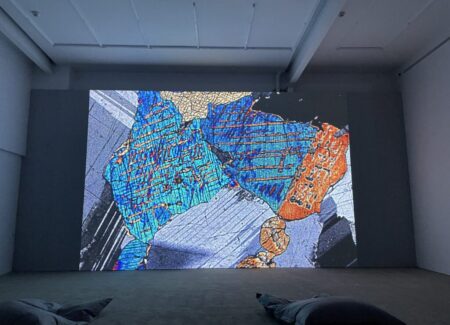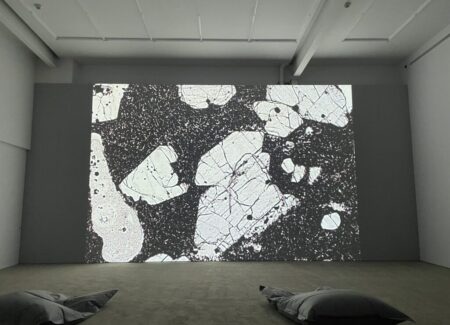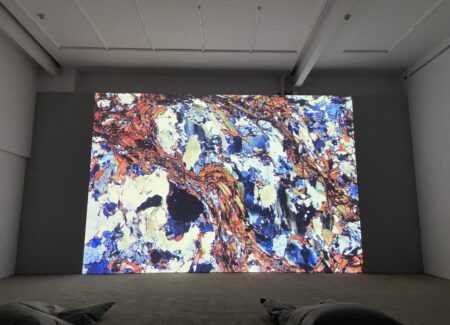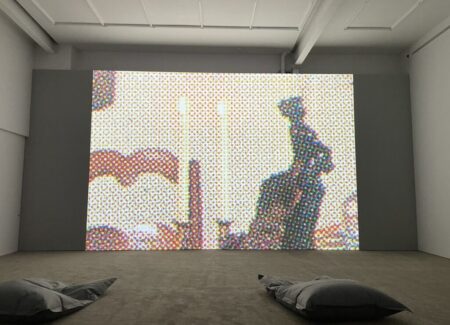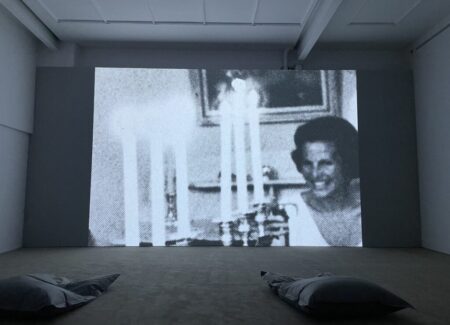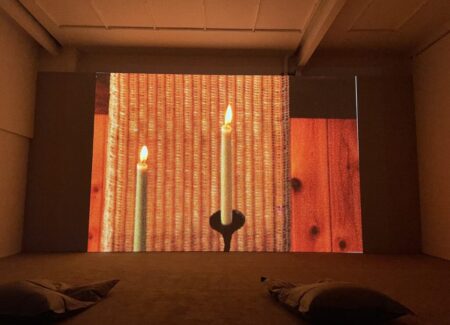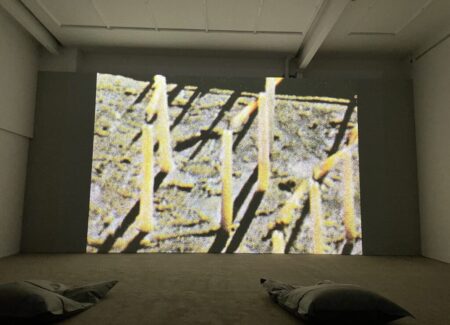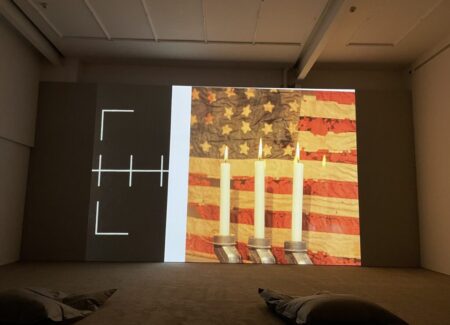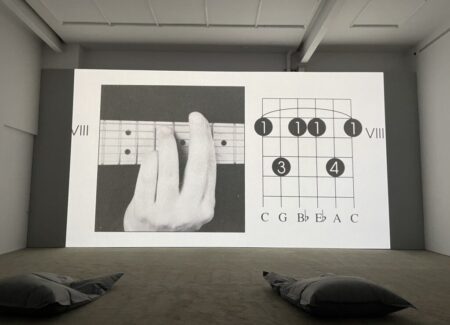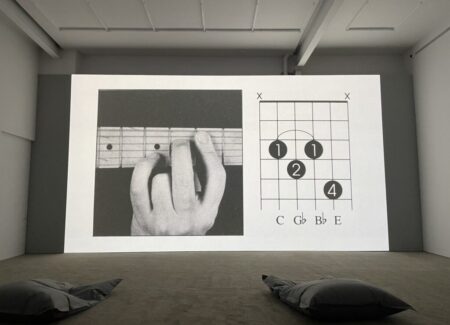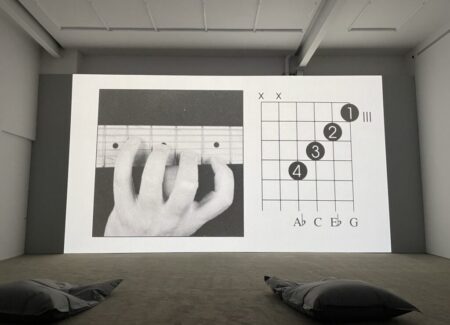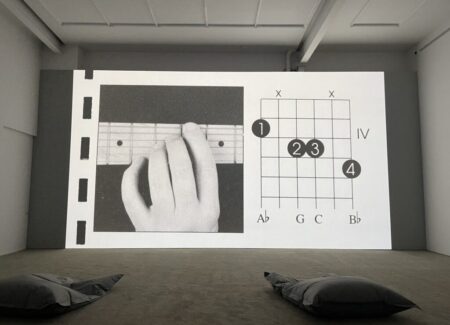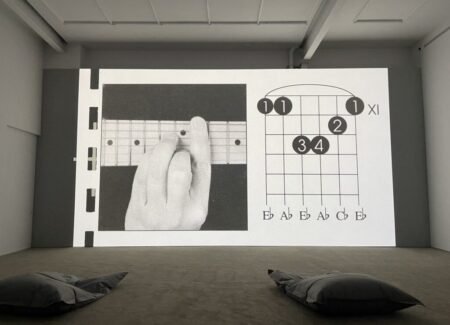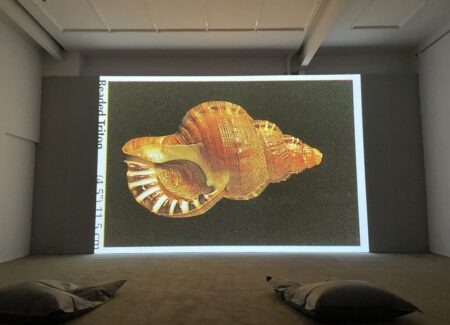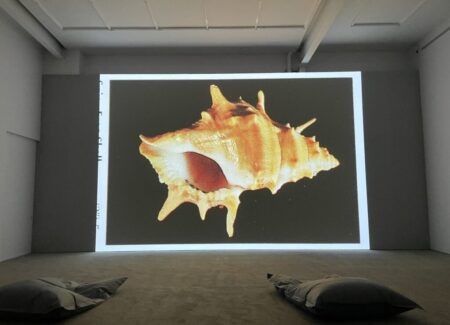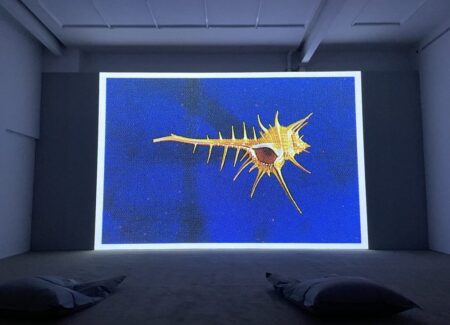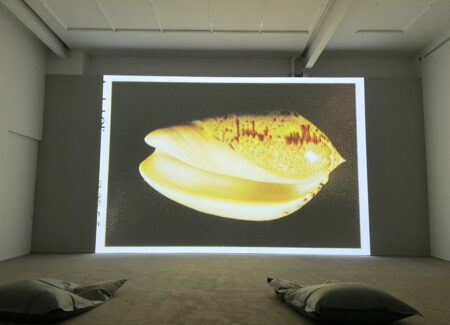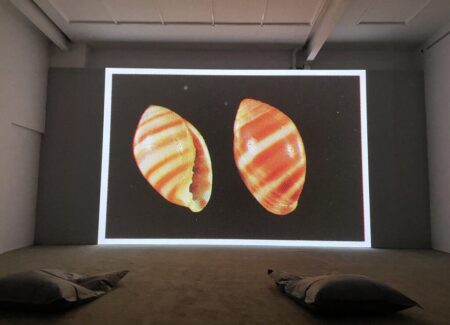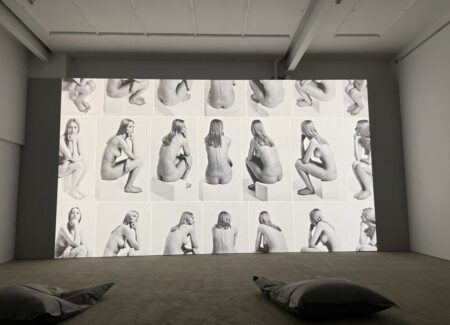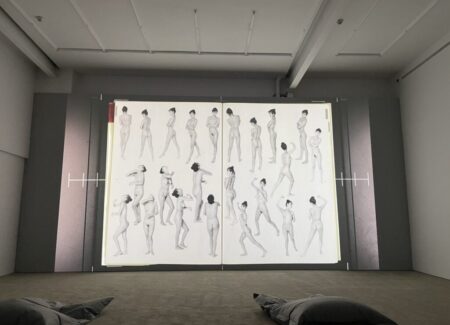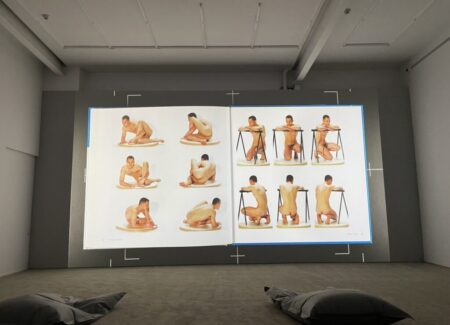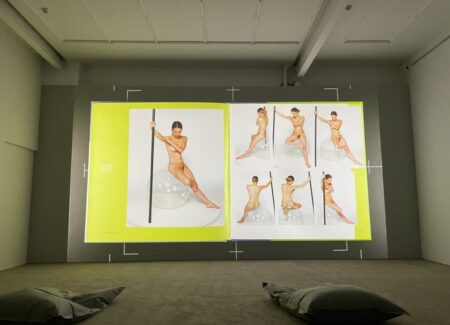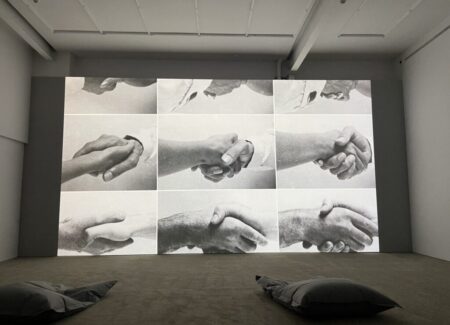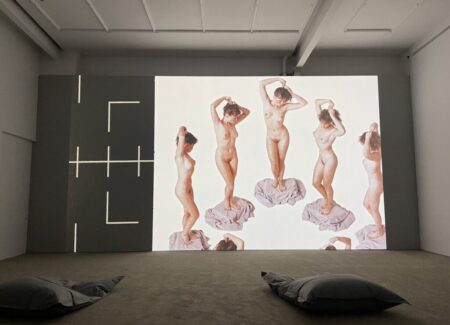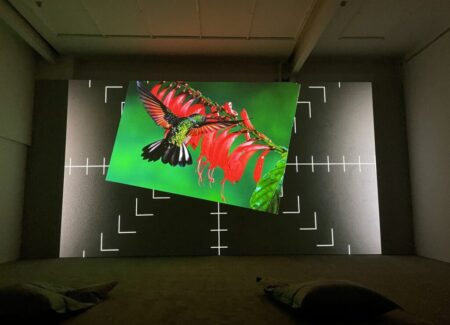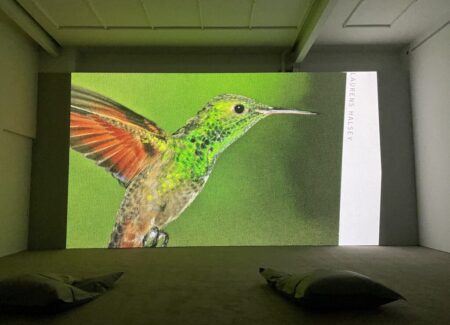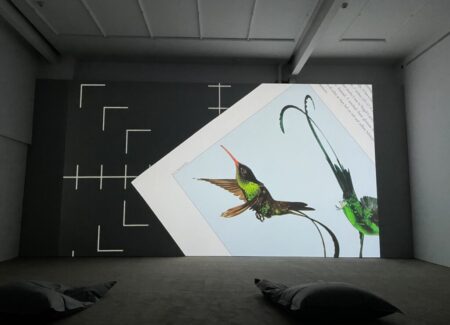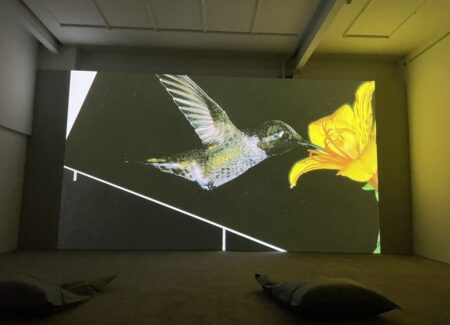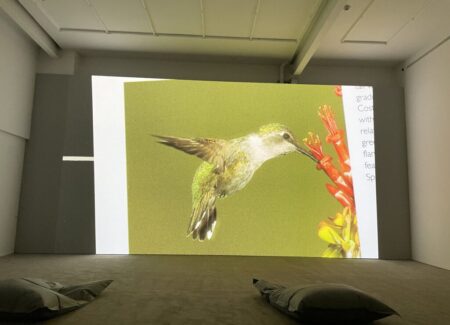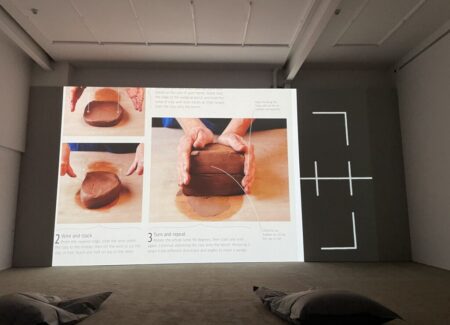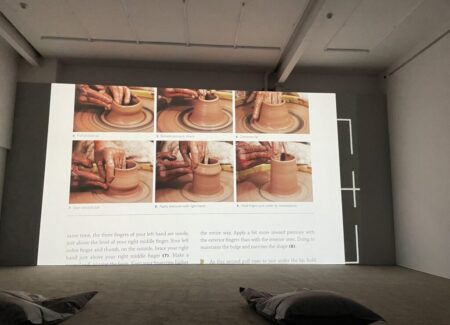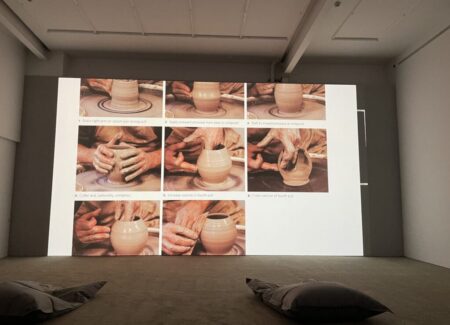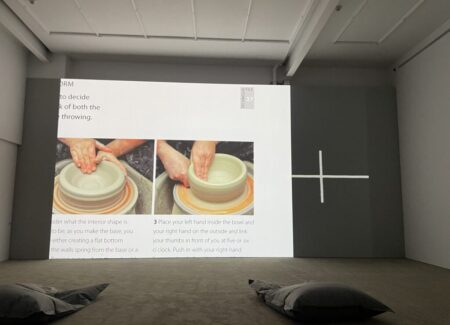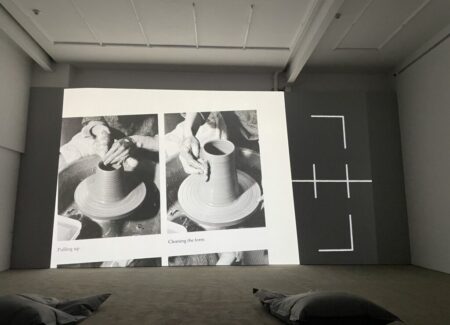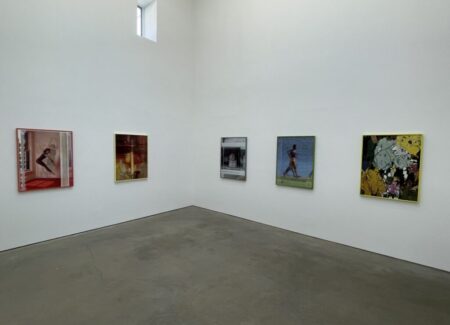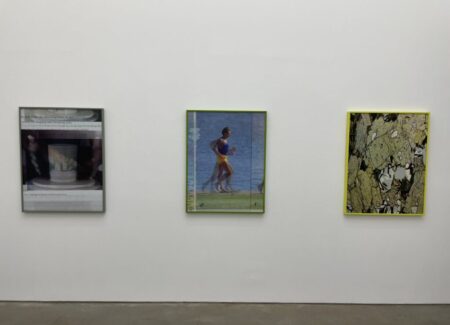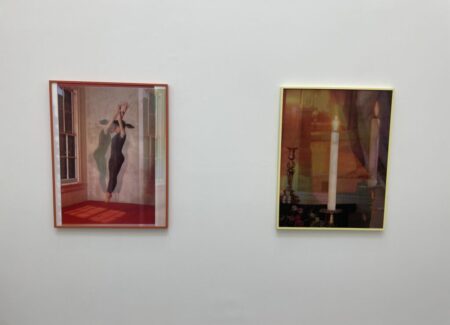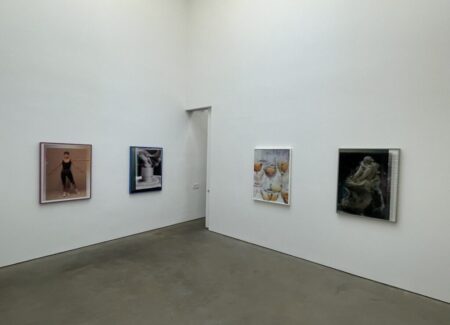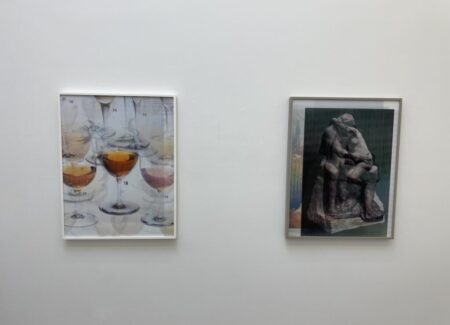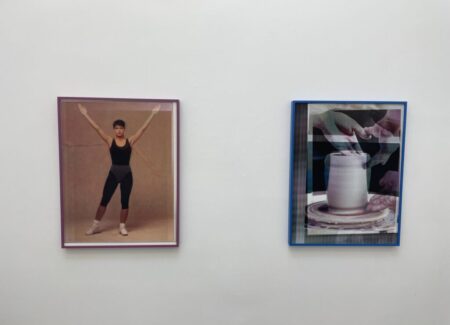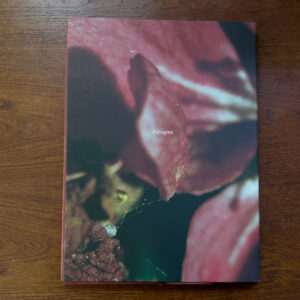JTF (just the facts): A two-venue solo presentation, featuring photographs, videos, and sculptural works. (Installation shots and video stills below.)
The following works are included in the two parts of the show:
Time Life (at 22 East 2nd Street)
- 1 4K video with sound, 2022, 6 minutes 4 seconds
- 1 4K video with sound, 2024, 3 minutes 13 seconds
- 1 4K video with sound, 2025, 9 minutes 53 seconds
- 1 4K video with sound, 2025, 5 minutes 7 seconds
- 1 4K video with sound, 2025, 17 minutes 15 seconds
- 1 4K video, silent, 2025, 3 minutes 53 seconds
- 1 4K video with sound, 2025, 4 minutes 30 seconds
- 1 4K video with sound, 2025, 1 minutes 54 seconds
- 1 4K video with sound, 2025, 4 minutes 14 seconds
- 9 lenticular prints in artist’s frames, 2024, 2025, sized roughly 40×31 inches
A Universal Picture (at 188 East 2nd Street)
- 15 ink and enamel on low-iron mirror, poplar and aluminum, 2024, sized roughly 74x56x3 inches, unique
- 10 plastic bottle/aluminum can/plastic tub/steel aerosol container and self-contained motion control system, 2025, unique
Comments/Context: In our 21st century age of increasingly splintered digital media, it hardly seems possible that not so long ago, we collectively paid attention to what was on the cover of a particular weekly newsmagazine. But in its mid- to late-20th century pre-digital heyday, we did indeed notice who or what was on the cover of Time magazine – by its very placement in that revered spot, a subject was by definition a cultural touchstone (at least in that moment in America).
Mungo Thomson became interested in the Time cover dynamics back in 2009, mostly as a graphic design exercise – he went back and charted all the tiny changes to the design of the signature logo and red frame across previous decades. This meticulous thinking ultimately led to the start of his “TIME Mirrors” series in 2012, which placed those evolving graphic elements on larger than life sized mirrors. In the first part of this two-part show, Thomson returns to this motif with new versions of the mirrored covers, adding the new element of a dog eared corner featuring an image from a particular week in the magazine’s history.
Thomson’s “TIME Mirrors” are of course conceptually and visually activated by their context, creating a “cover story” out of whoever or whatever is placed in front of them. In the confines of an empty gallery, the reflected image is the vacant white space, perhaps leading to a story about the art market; days earlier at the opening, perhaps the story was the thick crowd, or the fashions, or a particular attendee – a curator, a celebrity, an art installer, the gallery owner, the artist, a friend, a student group, some family members, someone with a dog, someone passing drinks, a FedEx delivery person, two people momentarily caught together, or even a collector/critic like myself. Hang the “TIME Mirror” somewhere else, in a museum, a home, or an office as an example, and the possible cover stories change once again. Any reflected subject has the potential to be aspirational, or celebratory, or ironic, or even infamous – inside the powerful (and legitimizing) embrace of the TIME logo, anything can become the news of the day writ large.
Thomson’s new mirrors repeat the same structure, with the addition of a trompe l’oeil folded down upper right corner, which reveals imagery from another “story” inside the magazine. These photographs create two new dynamics – they locate the previously open-ended covers at a particular moment in history (from the 1970s, 1980s, or 1990s), and provide an opportunity for juxtaposition and interaction between the corner image and the reflection, in a manner similar to the mirrored works by Michelangelo Pistoletto. So if I’m standing in front of the mirrored cover, making myself the cover feature, I now might find myself in visual dialogue with a flying dollar sign, a double helix, a windsurfer, a funeral casket, a cosmic view of Mars, a New York skyline, Superman, Madonna, Richard Pryor, or Kermit the Frog, each of which would subtly alter the cultural context of my own story. And once again, as whatever is placed in front of the mirror changes, so do the relationships between it and the corner imagery, in an endless dance of attention, distraction, and relative fame.
A different kind of elusively shifting image aggregation takes shape in Thomson’s “Time Life” stop-motion videos, as seen in the second part of this show. Taking their name from the original Time Life books series, which was made up of exhaustive multi-volume sets of 20th century reference books on topics as varied as art, science, home remodeling, the Old West, the Civil War, World War II, and nature (among others), Thomson’s videos (which he began making in 2014) collapse various encyclopedias and manuals down into flickering flip book-style arrangements of ever changing pages and images.
Nine new Thomson videos are shown in sequence (Volumes 8-16) on a large screen in a darkened gallery space, ranging in length from just a couple of minutes to more than a quarter of an hour. The longest of these, “Volume 12. Everything (Abridged)”, is as its name implies, the widest in scope – an exhaustive catalog of human creativity and craftsmanship, from ancient coins and figurines to jewelry, pottery, art, and technology, moving forward chronologically from the distant past to the relative present. Each individual rephotographed page features one or more artifacts, thousands of which flutter by in a fast moving parade, accompanied by a clicking sound that mimics the frame rate of the world’s highest-speed robotic book scanners. To watch this cleverly collapsed encyclopedia for a few minutes is to be washed over by a dizzying wave of human ingenuity, infused with an evolving sense of building, learning, and improving over time.
Aside from one other video of tinted geological formations, which claims to span “the first billion years”, the rest of Thomson’s video works are much more narrowly focused and more modest in their aspirations. A catalog of life models, featuring both men and women, clothed and nude, in a bewildering array of poses and setups, is given a sense of motion, with still frames set in sequence like Eadweard Muybridge’s famous motion studies. Still other works explore a collection of seashells, a visual catalog of guitar chords (with diagrammed finger positions), the movement of mimes, and the techniques for wheel-thrown pottery. And Thomson smartly uses the fixed central positioning of images in his videos aggregating pictures of burning candles and flying hummingbirds, the flipping of the images appearing to track the movement as the candles burn down and the birds zip around and gather nectar from flowers. In each case, Thomson has found formal structure, order, and motion in these static frames, and freed them to be more fluidly visible.
As seen in a smaller back gallery, Thomson has then gone on to leverage his stop-motion aesthetics into a series of lenticular prints, which collapse just a handful of images into a single composite. The works with bodies running, dancing, and exercising are the most easily appreciated, with the burning candles and spinning clay pots from the videos offering similarly satisfying step-wise motion when viewed from various angles.
Seen together, these many bodies of work find Thomson thoughtfully engaging with archival imagery and its role in creating cultural memory, and thinking about how such imagery can be reimagined in ways that unlock some of its otherwise hidden aesthetic possibilities. In each project, he has uncovered ways to activate the static pictures (and their embedded cultural associations), in a sense opening up doors of energized engagement for viewers. It is this unexpected potential for renegotiated connection, in multiple forms, that feels durably fresh and innovative.
Collector’s POV: The photographic works in this show are priced at $18000 each (for the lenticular prints) and $100000 (for the mirrored works). Thomson’s photography has little secondary market history at this point, so gallery retail likely remains the best option for those collectors interested in following up.
